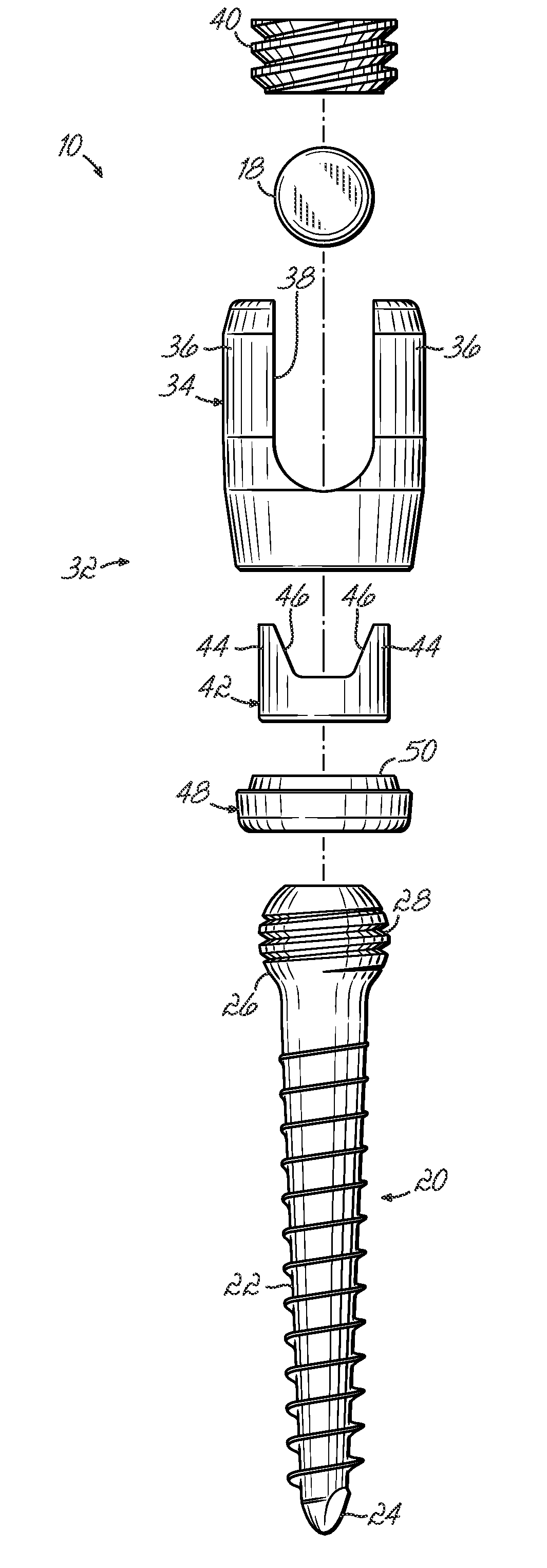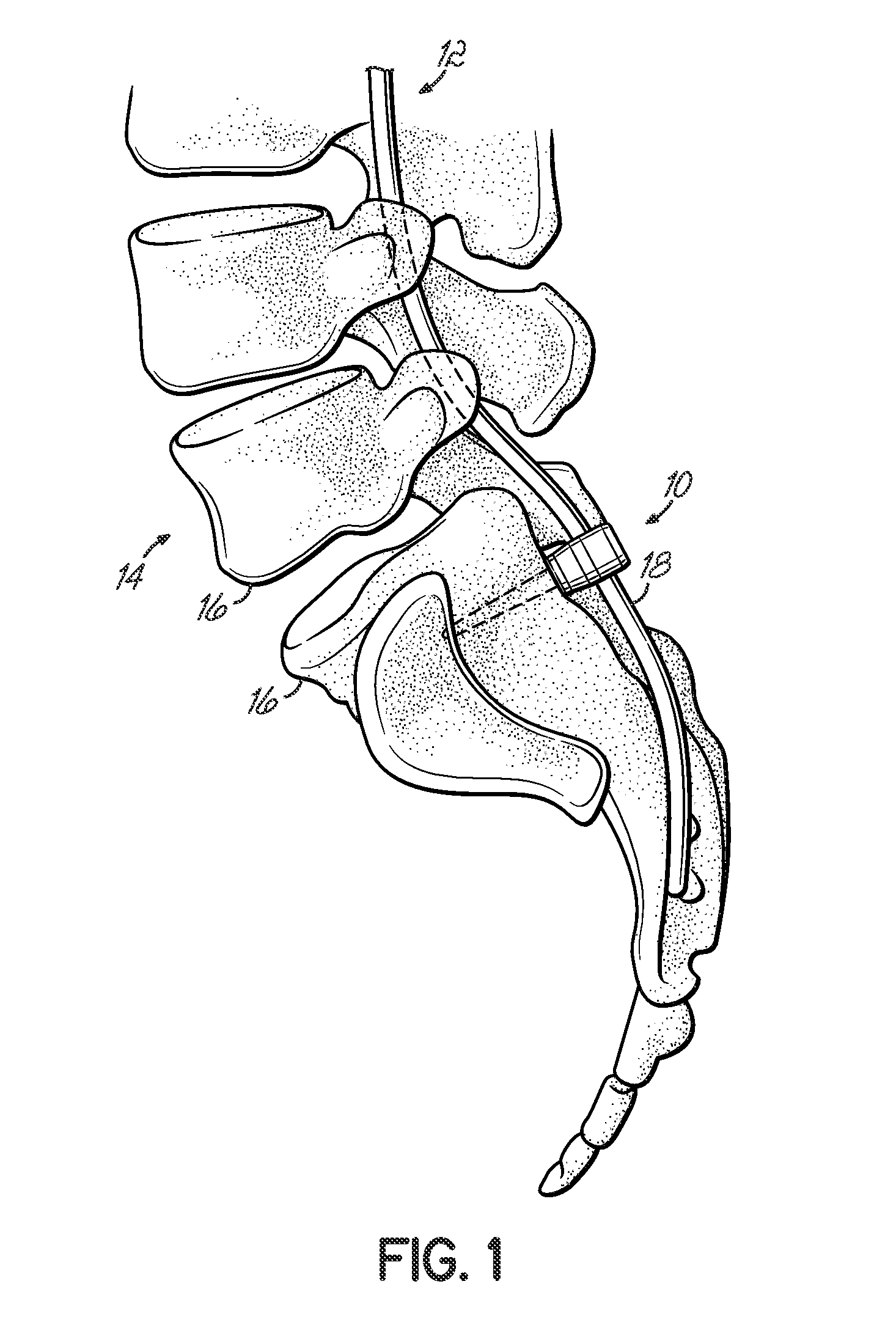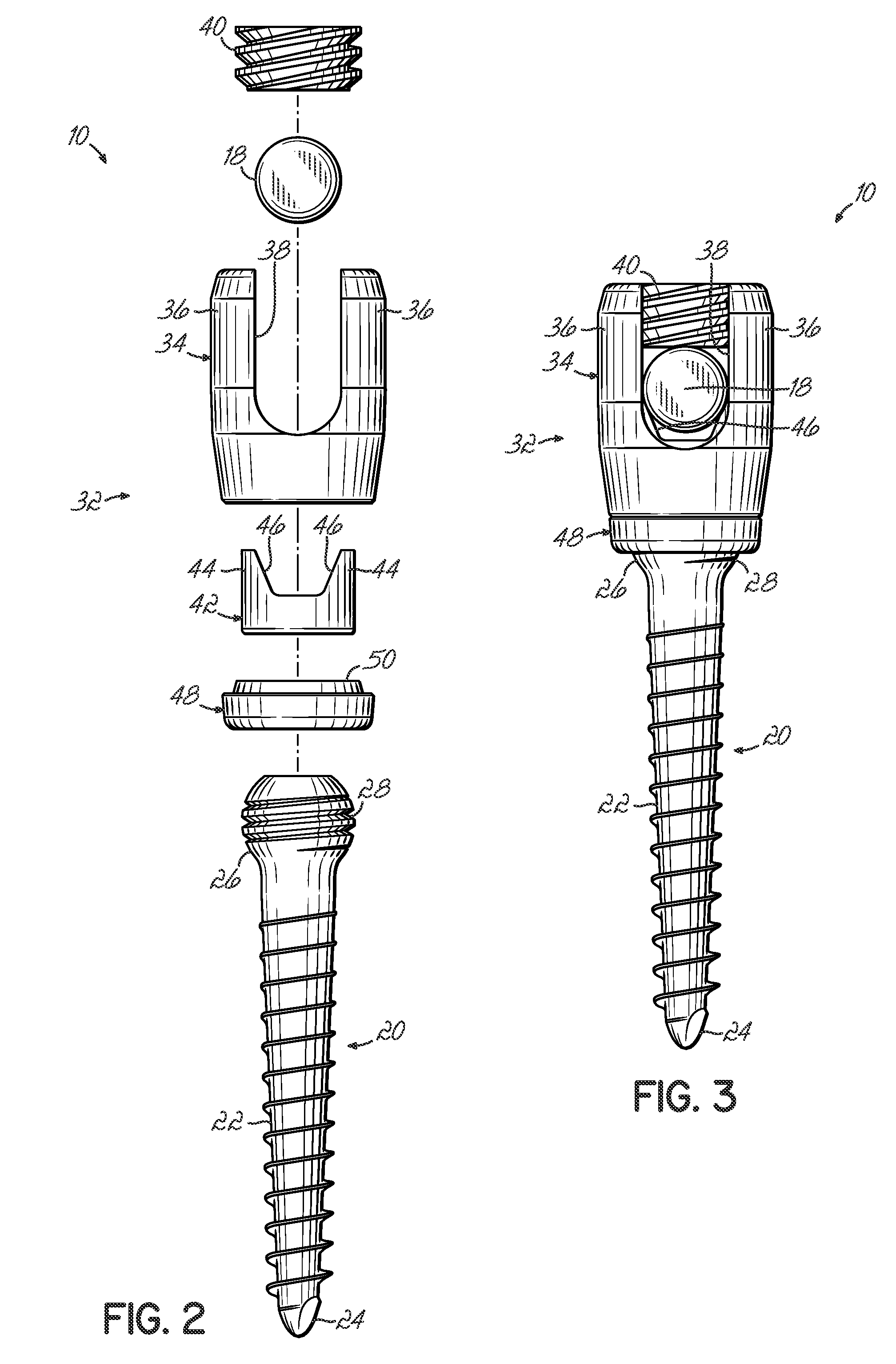Removable polyaxial housing for a pedicle screw
a technology of pedicle screw and polyaxial housing, which is applied in the field of spine fixation devices, can solve the problems of significantly more difficult reanimation of the polyaxial screw, if possible at all
- Summary
- Abstract
- Description
- Claims
- Application Information
AI Technical Summary
Benefits of technology
Problems solved by technology
Method used
Image
Examples
Embodiment Construction
[0022]Referring to FIG. 1, one embodiment of a removable polyaxial pedicle screw assembly 10 is shown as part of a spinal fixation system 12 mounted to a spine 14 of a patient. The pedicle screw assembly 10 is shown inserted into a vertebra 16 in the sacrum of the patient's spine 14 with a spine rod 18 mounted to the pedicle screw assembly 10. However, it will readily be appreciated by those of ordinary skill in the art that the pedicle screw of this invention can readily be used at other locations along the spine or other bones in a patient's body in addition to those shown in FIG. 1.
[0023]As shown in FIG. 2, the pedicle screw assembly10 according to one embodiment of this invention includes a pedicle screw 20 having a threaded shaft 22 and a tip 24 for insertion into the spine 14. A head 26 of the screw 20 is located opposite from the tip 24 and includes a generally spherical or convex profile with a helical thread 28 extending circumferentially around the screw head 26. The pedic...
PUM
 Login to view more
Login to view more Abstract
Description
Claims
Application Information
 Login to view more
Login to view more - R&D Engineer
- R&D Manager
- IP Professional
- Industry Leading Data Capabilities
- Powerful AI technology
- Patent DNA Extraction
Browse by: Latest US Patents, China's latest patents, Technical Efficacy Thesaurus, Application Domain, Technology Topic.
© 2024 PatSnap. All rights reserved.Legal|Privacy policy|Modern Slavery Act Transparency Statement|Sitemap



